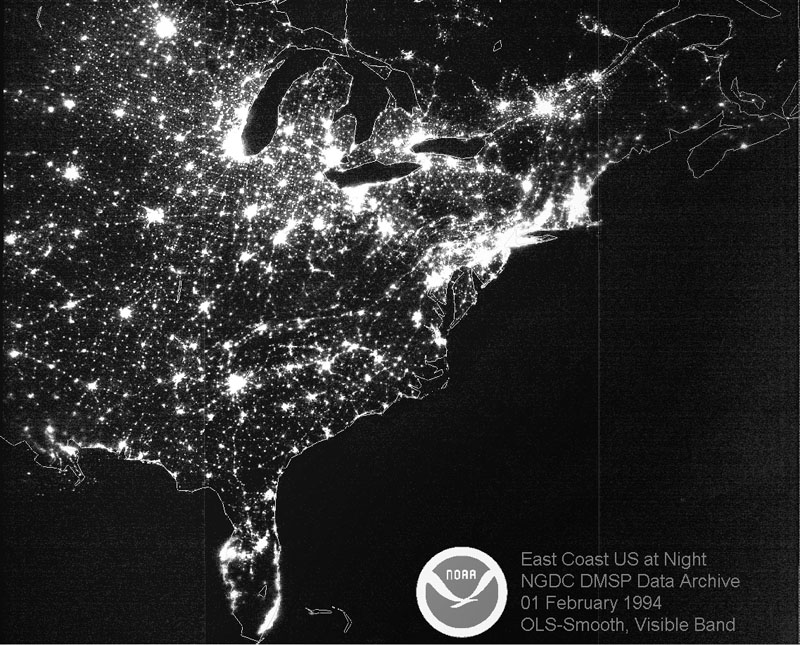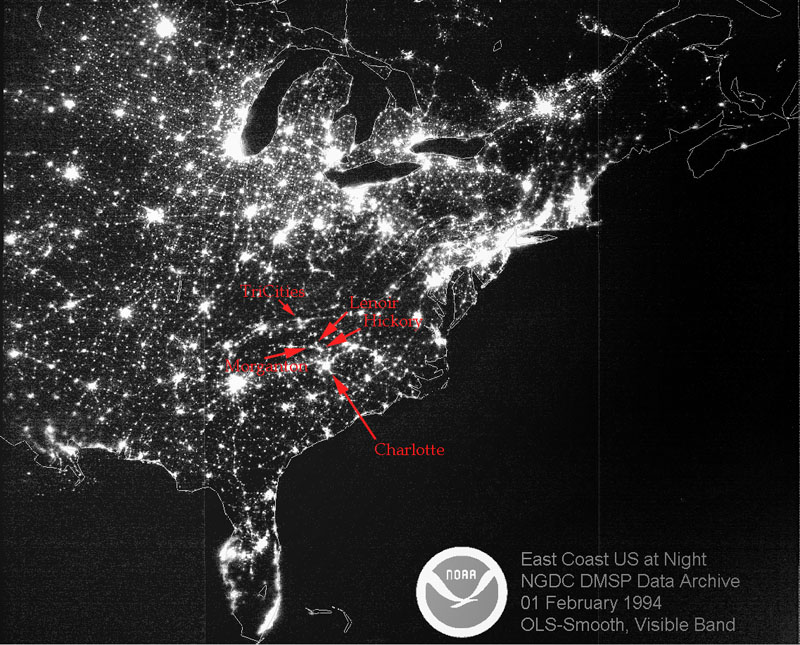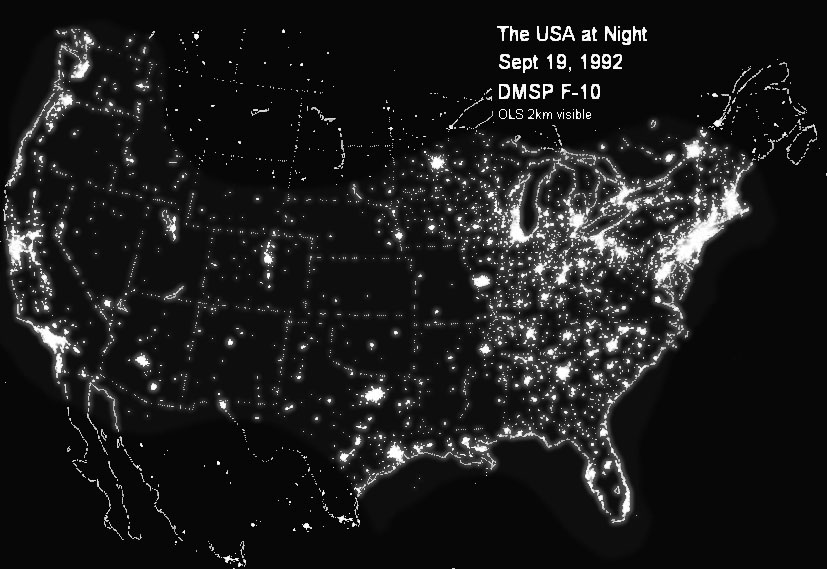
Adventures with a Barndoor | The Deep Sky | Where The Skies Are |
Stargazing through the skies of Rutherford College is like looking at Old Faithful through a forest of billboards. Or going to the opera and having someone talking incessantly on a cell phone in the seat behind you. Living under bright skies is like living in a house with a 100-mile view, except it's always foggy. I mean this sincerely and literally: nothing I have ever seen is more beautiful than the clear, dark sky, the whole arching spectacle of it. If you know where to aim a telescope or binoculars, there's more and more to see, deeper and deeper. This is the eastern United States at night photographed by Defense Meteorology Satellites:
|

You are here:

It's easy to see this light from space and from the ground. From space you can see that artificial lighting tracks population to a very good approximation. Home is about midway between the spots marked "Morganton" and "Hickory." On the best nights, the Milky Way is visible with relative ease; usually the Milky Way is missing or just a vague stain across the sky. Check out the rest of the country: |

In the West, the sky is dark for at least two reasons: there are not many people (so cities are far apart) and the air is thin and dry so it scatters less light. This photo is from 1992 and is not quite as sensitive as the Eastern photo from 1994 at top, but you get the idea. Arizona and New Mexico also have strict lighting ordinances that control the amount of light beamed into the sky. Full cut-off light fixtures and limits on upward-directed lighting count for much. The sky is literally hundreds of times darker out West. As a bonus, the sky is also reliably cloud-free (deer and antelope are also reported to play). Comparing the skies here to the skies in the rural southwest is not like comparing Ski Beech to Angel Fire; it's like comparing skiing down our cul de sac to Angel Fire. It's like comparing surfing off Waimea to trying to catch a boat wake on Lake Rhodhiss. You can do those things, and even have a bit of fun doing them, but they're not what anyone means by skiing, surfing, or stargazing. A note about photography: A deep sky camera behind the telescope lets me photograph what I cannot see. That's no small thing. But using the cooled CCD is so much more complicated than simply looking that it's important to find some way to set the equipment up semi-permanently. It takes about 2 hours to set up to start photography, another hour or so to take the gear down. That's 3 hours out of every clear night spent getting ready or taking care of hardware. It's as if the most casual lunch involved cooking biryani. So I keep scheming ways to set up the gear and leave it set up for days or weeks at a time. But wait! Canon DSLRs are making deepsky photography much more casual. Follow the link to the Deep Sky to check out progress on that front.
|